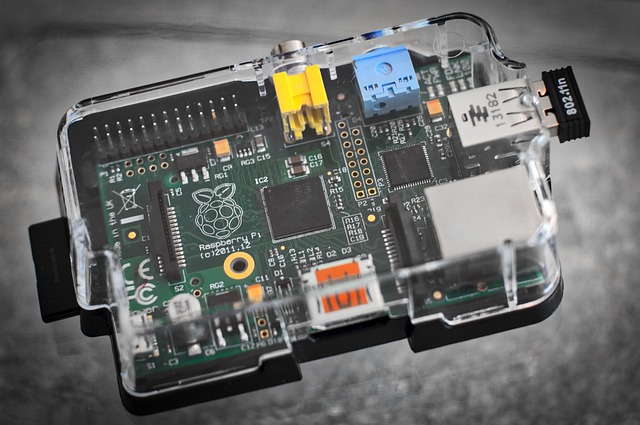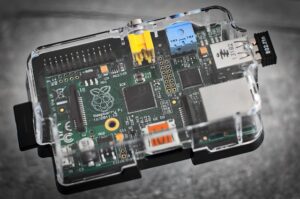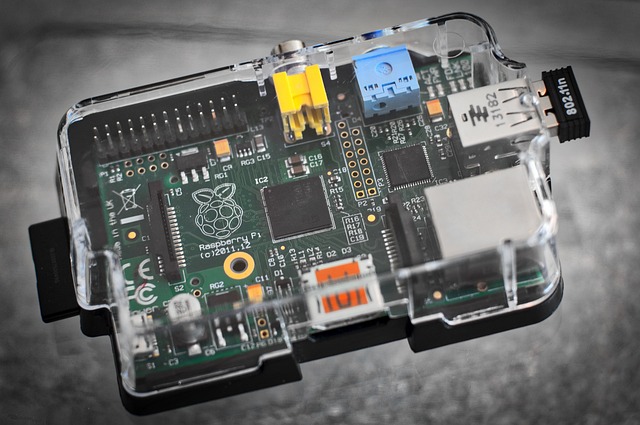Open-source virtualization projects have become central to efficient resource management and secure isolated environments, enabling global developers to collaborate on rapid advancements in technology. These projects prioritize transparency, community engagement, and continuous innovation, ensuring that virtualization solutions adapt to current needs effectively. Security is particularly robust within these communities, with peer review and collective vigilance maintaining system integrity for handling complex simulations and sensitive data. The open-source model levels the playing field by allowing smaller entities to contribute alongside larger organizations, accelerating technological progress in virtualization while enhancing overall security and robustness. KVM exemplifies this success, delivering high-performance capabilities essential for cloud computing, data centers, and emerging edge computing applications. Community feedback is invaluable, providing diverse perspectives that refine user experiences, and adapting features to meet evolving requirements across various sectors. This feedback loop enhances stability, performance, and adaptability of virtualization platforms, keeping them at the forefront of technology. Stakeholder engagement via forums and shared platforms is crucial for success, with transparent documentation, agile practices, and rapid iteration ensuring that products are both technically sound and user-centric. Crowdsourced testing amplifies performance, offering a robust method for refining virtualization solutions through diverse user inputs. Performance benchmarks and active contributor rates measure the effectiveness of open collaboration, while adoption rates and user feedback ensure responsiveness to real-world needs. This holistic approach to measuring success sustains high standards in virtualization, propelling ongoing growth and innovation within the field.
Virtualization technology continues to evolve at a rapid pace, driven by the collective ingenuity of developers worldwide. This article explores the pivotal role of community-driven development in propelling virtualization forward. We delve into open source collaboration, the significance of stakeholder engagement, and the power of crowdsourced testing, all critical components that contribute to the robustness and innovation within virtualization projects. By examining strategies that enhance community feedback and measuring success through established metrics, we provide a comprehensive overview of how virtualization technologies thrive in a collaborative environment. Join us as we dissect the intricacies of community-driven development and its transformative impact on the virtualization landscape.
- Embracing Open Source Collaboration in Virtualization Projects
- The Role of Community Feedback in Enhancing Virtualization Technologies
- Strategies for Effective Stakeholder Engagement in Virtualization Development
- Leveraging Crowdsourced Testing and Quality Assurance for Virtualization Solutions
- Measuring Success: Metrics and KPIs for Community-Driven Virtualization Development
Embracing Open Source Collaboration in Virtualization Projects

In the realm of technology, virtualization has become a cornerstone for efficient resource management and isolated testing environments. Open source collaboration in virtualization projects has significantly amplified their potential, fostering a synergy where developers from diverse backgrounds contribute to the advancement of these technologies. The open-source model encourages transparency and community involvement, allowing for continuous improvements and innovations that are not confined by proprietary constraints. This collaborative approach enables the rapid evolution of virtualization solutions, as the collective expertise of contributors converges to address challenges and enhance performance. Moreover, the open-source nature of these projects ensures a high level of security through peer review and community oversight, which is critical for systems that emulate complex environments and handle sensitive data.
The benefits of embracing open source collaboration in virtualization are manifold. It democratizes access to cutting-edge technology, allowing smaller organizations and individual developers to participate and influence the development process on an equal footing with larger entities. This not only accelerates innovation but also promotes a more robust and secure software ecosystem. For instance, projects like KVM (Kernel-based Virtual Machine) have thrived under this model, offering a type-1 hypervisor that is both open source and widely regarded for its stability and performance. The collaborative nature of these projects ensures that the virtualization tools we rely on today are continuously refined and adapted to meet the evolving needs of users across various sectors, including cloud computing, data centers, and even edge computing scenarios.
The Role of Community Feedback in Enhancing Virtualization Technologies

The role of community feedback is pivotal in advancing virtualization technologies, as it offers a diverse array of insights that are instrumental in refining and enhancing user experiences. Virtualization, being a dynamic field, benefits from the real-world applications and innovative problem-solving approaches only a diverse user base can provide. Engaging with users across various environments allows developers to identify gaps, understand unique challenges, and prioritize features that align with the evolving needs of the community. This iterative process not only improves the stability and performance of virtualization platforms but also ensures they remain adaptable to new trends and technological advancements. Users from different sectors such as education, healthcare, and enterprise can offer distinct perspectives that drive innovation within these technologies. As virtualization continues to permeate more aspects of technology and society, the community’s role in shaping its direction becomes increasingly significant.
Incorporating community feedback is a strategic approach to ensuring that virtualization solutions are not only robust and scalable but also user-centric. This collaborative process enables developers to validate hypotheses, test new functionalities, and receive immediate and relevant feedback that can accelerate the development cycle. The insights gathered from users contribute to a more robust product by highlighting areas where enhancements could lead to better integration, security measures, and overall efficiency in virtual environments. By fostering an environment where community input is valued and acted upon, developers can maintain a competitive edge, offering solutions that are not only at the forefront of technology but also closely aligned with user expectations and operational demands.
Strategies for Effective Stakeholder Engagement in Virtualization Development

In the realm of virtualization development, stakeholder engagement is pivotal for successful project outcomes. Effective strategies must be implemented to ensure that all parties, including developers, users, and technical experts, are actively involved throughout the process. One approach to facilitate this involvement is through the establishment of clear communication channels, such as dedicated discussion forums, regular webinars, and collaborative platforms where stakeholders can share insights, feedback, and ideas. These channels not only serve as a hub for dialogue but also help in gathering diverse perspectives that can enrich the virtualization development process with innovative solutions. Additionally, stakeholder engagement can be enhanced by providing transparent access to project documentation, roadmaps, and progress updates. This transparency fosters trust and a sense of ownership among participants, which is crucial for their ongoing commitment and contribution to the project.
Furthermore, virtualization projects often benefit from leveraging user-centric design methodologies that incorporate stakeholder feedback directly into the development lifecycle. By adopting agile practices, developers can iterate on features rapidly, incorporating real-time input from users in a manner that aligns with the project’s goals and technical constraints. Regular sprints and incremental releases allow for continuous validation of the product against stakeholder expectations, ensuring that the virtualization solutions being developed are not only technically sound but also meet the practical needs of end-users. This iterative process underscores the importance of a collaborative environment where stakeholders are actively engaged, contributing to a more robust and user-friendly virtualization platform.
Leveraging Crowdsourced Testing and Quality Assurance for Virtualization Solutions

In the realm of virtualization solutions, leveraging crowdsourced testing and quality assurance plays a pivotal role in refining and enhancing product performance. By tapping into a diverse pool of users, developers can gather extensive feedback on software functionality across a multitude of hardware configurations and use cases. This approach not only uncovers bugs and performance issues but also provides insights into user behavior and preferences, which can guide the iterative development process. The community’s engagement in testing ensures that virtualization solutions are robust and reliable under various conditions, as real-world usage patterns are reflected in the testing data. This collaborative model fosters continuous improvement, as each participant’s input contributes to a more stable and user-friendly product, ultimately accelerating the delivery of high-quality virtualization solutions to market.
The integration of crowdsourced testing into the quality assurance pipeline for virtualization products offers scalability and adaptability that traditional testing methods may struggle to match. It allows for simultaneous testing across different environments, leading to faster identification of issues and the ability to address them promptly. Moreover, this method harnesses the collective expertise of a global community, which can be particularly beneficial when dealing with complex virtualization scenarios. By fostering an environment where users are actively involved in the quality assurance process, developers can ensure that their virtualization solutions remain at the forefront of innovation and reliability. This symbiotic relationship between the community and the development team not only enhances product quality but also strengthens user trust and satisfaction.
Measuring Success: Metrics and KPIs for Community-Driven Virtualization Development

In the realm of community-driven development, particularly within virtualization, success is a multifaceted concept that extends beyond mere code contribution. Measuring the efficacy of such an endeavor involves a suite of metrics and key performance indicators (KPIs) tailored to capture the dynamics of open collaboration and innovation. Core metrics include the rate of active contributors, which reflects the level of community engagement, and the frequency of commits, which indicates the project’s momentum. Additionally, tracking the diversity of contributors by geography and expertise area can provide insights into the project’s reach and inclusivity. For virtualization projects, it’s crucial to monitor performance benchmarks such as resource utilization efficiency, compatibility across different environments, and the security of virtual machines. These KPIs help ensure that the virtualization solutions developed are not only robust but also scalable and secure, which are critical in any deployment scenario. Furthermore, the adoption rate of new features and the community’s feedback on these innovations play a significant role in gauging success. Engaging with users through surveys, forums, and issue trackers allows for continuous improvement based on real-world use cases, thereby aligning the project’s direction with user needs. By meticulously analyzing these metrics, community-driven virtualization projects can maintain a high standard of quality and innovation, driving progress in this technical field.
Virtualization technology continues to evolve at a rapid pace, with community-driven development playing a pivotal role in its advancement. By embracing open source collaboration, virtualization projects have not only fostered innovation but also ensured robust and secure solutions through the collective expertise of global contributors. The integration of community feedback has proven instrumental in enhancing these technologies, reflecting real-world use cases and diverse needs. Effective stakeholder engagement and crowdsourced testing have further bolstered the quality assurance processes, leading to more reliable and user-centric virtualization solutions. As evidenced by the metrics and KPIs tracked, the community’s involvement has led to tangible improvements and measurable success in the development of virtualization platforms. The future of virtualization is bright, with ongoing collaborative efforts promising even more sophisticated and responsive technologies that can adapt to an ever-changing digital landscape.


























